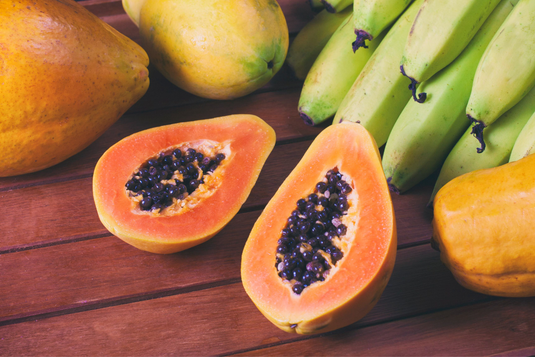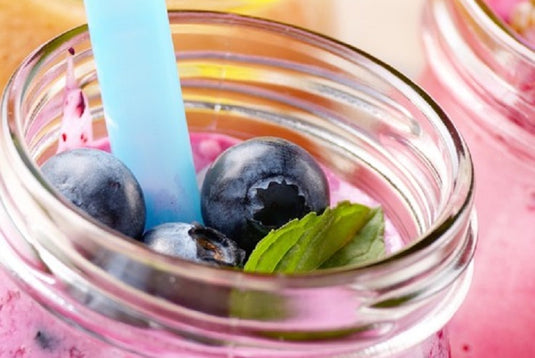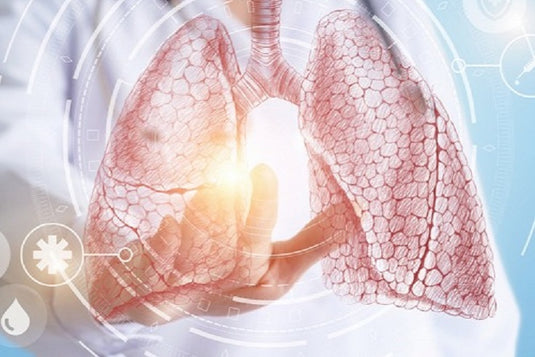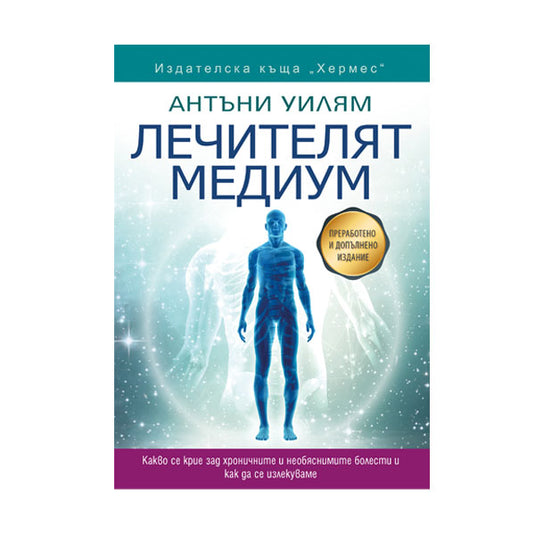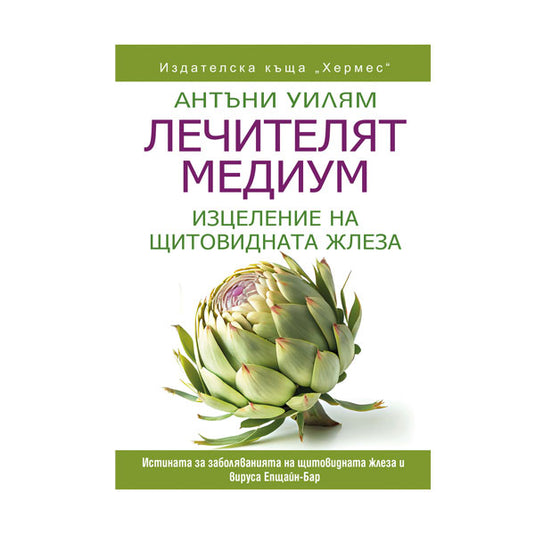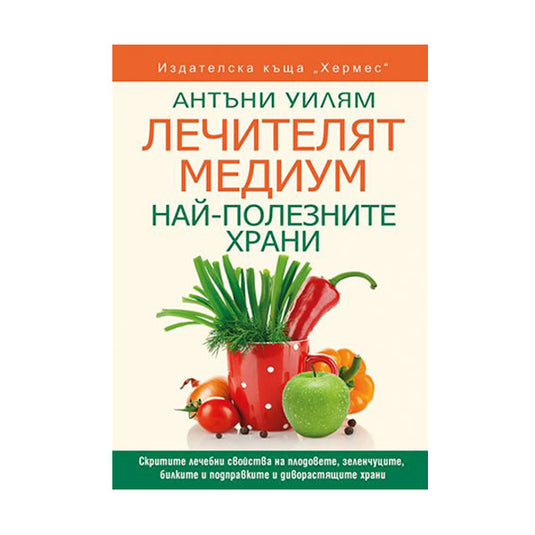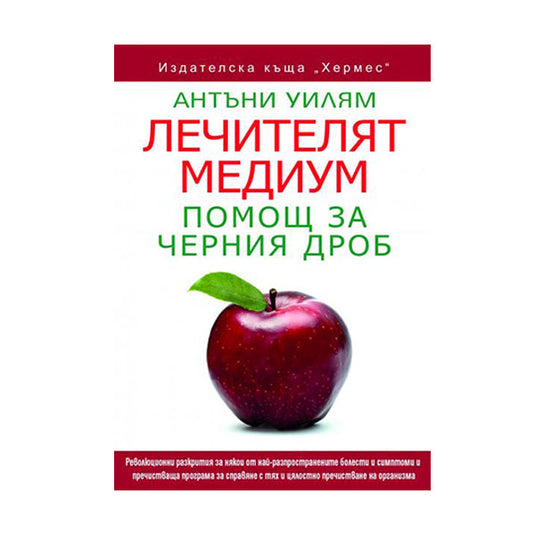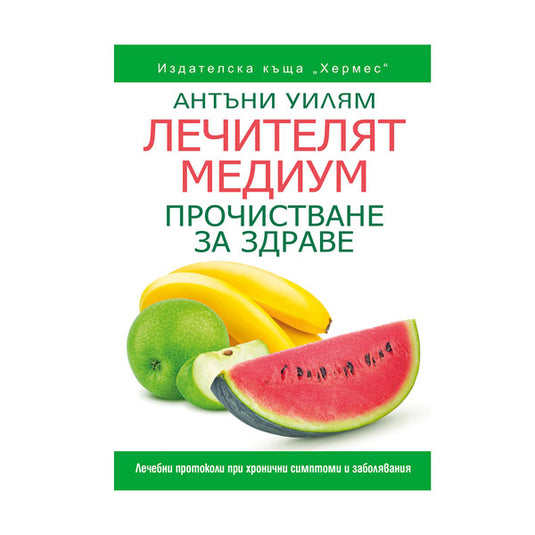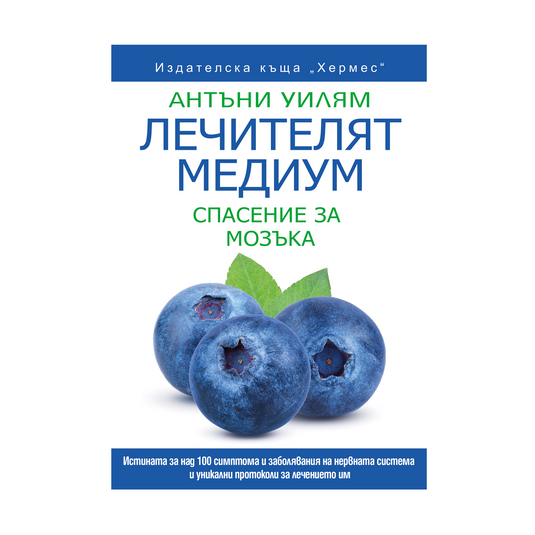Continuation of the article "Cleansing with monofeeding of the Healer Medium (part 1)" .
WHAT YOU NEED TO KNOW ABOUT MONO EATING ACCORDING TO ANTHONY WILLIAMS
Although monofeeding is the most gut-soothing regimen, people with sensitive gastrointestinal tracts can still feel the movement of food and panic that something is wrong. If you experience any discomfort and follow through with any of these plans, don't let your anxiety get the better of you. When the walls and lining of your intestines are inflamed, they can be hypersensitive when food passes through them. Delicate foods such as banana, papaya, lettuce or steamed potatoes, peas, squash, green beans, Brussels sprouts or asparagus do not harm you.
This may seem illogical, because when you eat a piece of cheese or an egg, you don't feel any discomfort. This is deceptive. This is because the cheese and eggs move through the body as a soft mush, so they don't rub against the hypersensitive nerves at this point. However, they feed the very bacteria, viruses and even non-productive fungi that create inflammation in our intestinal tract, ultimately exacerbating this hypersensitivity. Don't go back to the eggs and cheese (which are actually the root of the problem). It will become a vicious cycle if you don't know what is really going on.
Gastroparesis
Gastroparesis is becoming an increasingly popular diagnosis, but its causes remain a mystery to medical research and science. There is no real way to tell if there is paralysis of the stomach, duodenum, small intestine, large intestine, or rectum unless someone has suffered an actual physical injury or undergone a surgical procedure that damaged the nerve endings in a particular area of the digestive tract. In fact, many cases of gastroparesis are caused by the brain, with toxic heavy metals and pathogens causing brain inflammation that can minimize nerve strength in all areas of the digestive tract, resulting in a range of symptoms. The nerves around the lining of the gut can also become inflamed under the influence of viruses such as EBV, herpes zoster and human herpes virus type 6 (HHV-6), which compromise the functioning of the nerve endings, which in turn leads to sluggish peristalsis.
There are different levels of gastroparesis. If you are able to chew food and are not attached to a feeding device, monofeeding can be extremely helpful in treating gastroparesis, allowing the nerves to repair inside the digestive linings. A mono-meal cleanse also provides critically needed minerals and glucose to the brain so that neurons can strengthen and neurotransmitter activity can be restored, helping to send signals to areas of the gut lining that are in critical need of peristaltic action . At the same time, these mononutrient regimens are antiviral, meaning they can reduce low-grade viral infections that cause scarring and nerve damage in the lining of the digestive tract and other areas of the digestive system. Essentially, monoeating can retrain the digestive system, help it align with the central nervous system, and allow a person to heal.
For undiagnosed bowel problems
As mentioned earlier, problems with the digestive tract often go undiagnosed. In reality, the nerves in the stomach, duodenum, small intestine, and/or colon are hypersensitive due to inflammation caused by an increased bacterial or viral load. This can lead to immense discomfort that feels like the digestive system cannot process or digest food properly. The answer is monofeeding.
Not to mention that most people in the world are hydrochloric acid deficient. This means that they don't break down their proteins properly, so those proteins rot and break down in the intestinal tract, creating a situation that eventually becomes swelling in the upper or lower part of the intestinal tract. When food decomposes, it becomes food for unproductive bacteria. This can cause bacterial overgrowth in the small intestine or even Crohn's disease or colitis .
In many people, the stomach lining may be covered with scar tissue or have other structural changes.
Also, a small pouch can form at the bottom of the stomach, where putrefying proteins, fats, and other waste material begin to collect and weigh down.
Monofeeding interrupts this process and gives the stomach a chance to start healing and strengthening. One day his lining may recover and he may function normally.
For the liver
When people struggle with any digestive issues, regardless of the symptoms, they all have one thing in common: a weakened liver that doesn't produce enough bile to properly break down fat. Filled with toxins, poisons and pathogens, it is a liver that is stagnant or sluggish, with a slower moving blood supply, which is a problem for digestion because a weakened liver puts more strain on the digestive tract, including the gastric glands that produce hydrochloric acid . Monofood cleansing is beneficial for the liver, which automatically supports the digestive tract and hydrochloric acid in the stomach.
For food allergies
The mono meal plans in this article are an excellent way to deal with food intolerances or allergies. In part, this is because restricting yourself to one of these plans prevents you from eating the problem foods that feed the pathogens causing the allergy problem. Monoeating gives your body a break from the toxic byproduct of pathogen reproduction that occurs when problematic foods enter your body. High-fat foods thicken the blood, which lowers circulating oxygen and weakens the liver, allowing viruses and unproductive bacteria to thrive. When viruses thrive, they release neurotoxins that disrupt how our bodies work and can make us sensitive to foods, even those that seem healthy. By cutting out these problem foods, monoeating breaks this cycle. The pathogens that cause food allergies and sensitivities begin to starve and die, and you begin to recover.
THE DETOXIFICATION EFFECT
In addition to a protocol for dealing with food sensitivities, monofeeding has a cleansing effect. While it won't cleanse the liver to the same extent as the 3:6:9 Cleanse, the mono-food cleanse can gently release mild levels of toxins in the liver while gently detoxifying all the other organs—stomach, duodenum, small intestine, colon intestine and rectum.
The monofeeding options in this article also have an anti-pathogenic effect. They fight viruses, bacteria, fungi, yeasts and molds. As well as offering physical benefits, this cleansing effect can mean that monoeating has the potential to surface food cravings and emotions to work on.
CONCERNS ABOUT SINGLE EATING
Many people fear that mono-eating doesn't offer enough quantity or variety of nutrients. These unfounded concerns are rooted in the misinformation that the more colorful the portion, the more nutrients it contains. In fact, when one's health is compromised, monofeeding can really help. This is not done by giving the body all possible nutrients, because in a number of diseases we cannot process all of it and take advantage of it. To solve this problem, we need to give the body what it needs at that moment to trigger its natural ability to heal itself. After that, you will be able to consume a lot more foods. However, at this time, you should make an effort to correct the current problem. Until you do, you can't reap the benefits of a varied diet.
The variety of foods
During a mono-eating cleanse, the larger amounts you consume of a healing food like papaya and the way your body benefits from it overrides the need for variety. If you're trying to fit the whole rainbow on your plate, you're taking in very little of each food. It's not like eating a whole bowl of tomatoes or a whole head of cauliflower in one sitting. Instead, you distribute the nutrients into small pieces of food. If your digestion is not a problem, you can make a salad with tomato, cucumber, grated carrot, broccoli, red pepper, avocado and orange (if you allow yourself to eat fruit at all), and add pieces of chicken breast on top. Sometimes, however, even when we do not follow a mono-eating regime, it is better to concentrate on stronger foods and their intake in larger quantities.
Celery juice is also an important part of these mono meal plans and is more than a superfood. You could be someone who has never had celery juice, but still eats a super variety and gets sick because the real, underlying problem hasn't been addressed. If food variety is the key to health, why do so many people who eat in seemingly healthy and varied ways still get sick?
About proteins and fats
One of the questions you have to be prepared for when you're on a mono-food diet and eat, say, only papaya for all your meals is "Where's the protein?" If you believe that protein is the most important nutrient, you will most likely be tempted to reject mono-eating and lose all of its healing benefits. Or you will know how to answer the question.
Remember this: we live in a protein-rich world and many people are sick. More and more people are eating more and more protein and this is leading to more diseases. So why do so many people think protein is the answer? Or do you think there might be another reason why people get sick?
Often, sufferers of chronic illness or symptoms receive the following advice from their treating physician: "Maybe you need more protein." Shouldn't the doctor say, "Let's look for other causes of your illness"? What's missing isn't the proteins. The bioavailable amino acids, antioxidants, becca-carotene, glucose, mineral salts, antiviral, antibacterial and antifungal compounds, trace minerals and phytochemical compounds in papaya and other foods in the monoprotocols offer true healing because they actively help to neutralize the viruses and pathogenic bacteria responsible for many of our diseases. Proteins do not destroy viruses and bacteria. They do not remove toxic heavy metals. They do not purify the body. They do not promote the work of the central nervous system, neurotransmitters and neurons. Protein doesn't get us back on our feet after we've been through the hell of a chronic illness.
Our relationship with food
Sometimes it's not the protein, the fat, or the variety of nutrients that your loved ones worry about when you start monoeating, but that you follow the diet with maniacal dedication. Let's not forget that we are actually all obsessed with food. Even those who claim they don't care what they eat, look at their reaction when their favorite food is taken away and replaced with something they don't like. Food is important to all of us and no one is an exception.
When someone struggling with a symptom or condition uses food to heal themselves, they can only be accused of being obsessed with food by someone who hasn't yet had the same issues in their life. Food rules our lives. It is human nature to think about the next meal. If we don't plan, we'll choose something unhealthy when we're hungry, and that can lead to another kind of obsessive thinking when we later regret reaching for the cookie or cupcake.
PERIOD OF EXITING THE SINGLE FEED REGIME
You're unlikely to be on a mono diet for the rest of your life. Nor should you stop before you're ready – if you've made progress on a mono diet cleanse, it's logical to be afraid to change it and risk your progress.
Either way, the day will come when you're ready to go back to eating more variety, whether you're impatient or hesitant, whether it's in days or weeks or a long stretch of months because you've needed to from monofeeding to deal with a more serious problem. You need to consider when and how to make this transition. You don't want to go overboard with monoeating, nor is it good for you to go back to a variety of foods too quickly.
If you've decided to try the mono-eating regimen, not because you've had serious symptoms, but simply to improve your general condition, you can go back to eating a variety of foods at any time. However, if you have overcome a chronic illness with the help of mono-eating, it is normal to not want to eat any other way. Very often, a person himself understands when the time has come to switch to a varied menu.
The right moment
When the time is right, it's best not to go back to the problem foods. Instead, keep it simple and add one new (non-problem) food at a time that you like. You may even decide to switch from one mono-food plan to another long-term before you start introducing a wide variety of foods. For example, if you've been on a potato and lettuce mononutrient cleanse for a long time and you're ready for a change, and at the same time you're worried about reintroducing too much, you can instead choose another mononutrient cleanse option from the first part of this article , "Cleanse with monofeeding of the Healer Medium (part 1)” .
How do you know you're ready to move on? One of the ways you can tell your nerves are healing naturally is that you gradually get your life back. You feel better than before. When you add different foods one at a time, you feel your digestion is doing well with them. You see that your condition has changed a lot since you started.
Important recommendations for the transition
When you're ready to eat more food, you shouldn't jump right into a steak with fried onions and a butter roll and chocolate ice cream for dessert. You shouldn't even start right away with other, healthier free radical fats. It will be good to give yourself some time so that your body can adapt. This means:
- Stay away from radical fats for a while. As a reminder, radical fats include nuts, seeds, nut oils such as peanut butter, oil, coconut, avocado, cocoa, chocolate, olives, bone broth and other animal proteins. How long depends on what state you were in when you started the mono diet cleanse. You had one or two mild symptoms, or your condition was really serious. You can go without radical fats for as long as you like. Don't be swayed by claims that your brain needs fat. Our brains are built mostly from glycogen stores and run on glucose, which is a form of sugar. Without this sugar, our cells cannot function; our central nervous system shuts down.
- Do not consume problem foods from the list in Chapter 7 of Anthony William's book Cleanse for Health (expect a detailed article on the subject on our blog soon). Give up problem foods for good, especially if you were in really bad shape before the Mono Cleanse. Even if it wasn't critical, try to avoid them.
You've come this far
Keep in mind that after the Mono Cleanse, healthy, fiber-rich foods (such as kale, red peppers, oranges, cauliflower, broccoli, and asparagus) or those that contain primarily fat (such as salmon, nuts, seeds, nut oils, and gluten-free grains) that are not on the list of problem foods may also cause discomfort when you start eating them again. This does not mean that they are bad for you. When people get treatment, sometimes they don't realize how much they've improved. For example, they may have started a monofeed cleanse with severe bloating , discomfort, lots of gas and cramping. As they begin to wean themselves from monofeeding, they may feel that the new foods they are introducing are rubbing on the lining of their digestive tract, or they may even feel a little bloated. Although the foods they introduce are not problematic, they can be frightening.
If this happens to you, remind yourself how much better you feel than before. You are now more attuned to your health than ever before, more aware of subtle sensitivities or subtle differences. A mononutrient cleanse makes you feel so comfortable that when you make the transition, even though your digestion is much better than when you started, you're more likely to feel your body's tolerance to different foods than ever before before. Don't confuse this with how bad you were before monofeeding.
If you're worried about some subtle sensitivity symptoms, even though you've come a long way, you can always go back to your comfort zone with the foods you felt good about while monoeating. No matter how much you've gotten better, you may have leftover inflammation from leftover pathogens and toxins. It's normal to go back to monofeeding for a while when you start switching foods. Or you may want to experiment in your own way with another version of monofeeding. Or you could try introducing a few foods from this article and find a new comfort zone. Even if it's not a shortcut to returning to a more varied diet, remember how far you've come in your recovery process. You are in a much better place than you were before. You've come this far.
